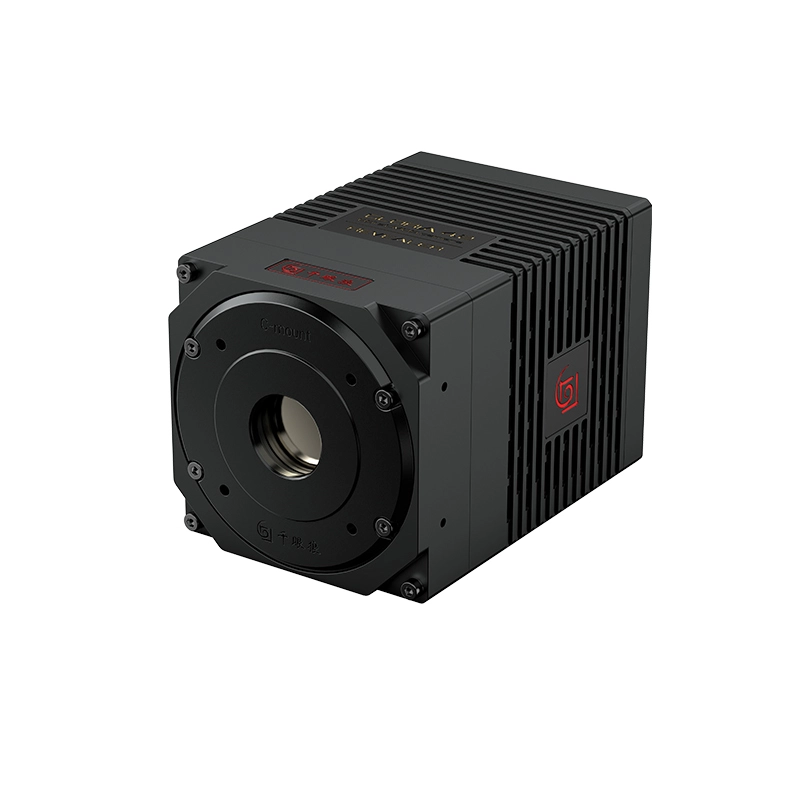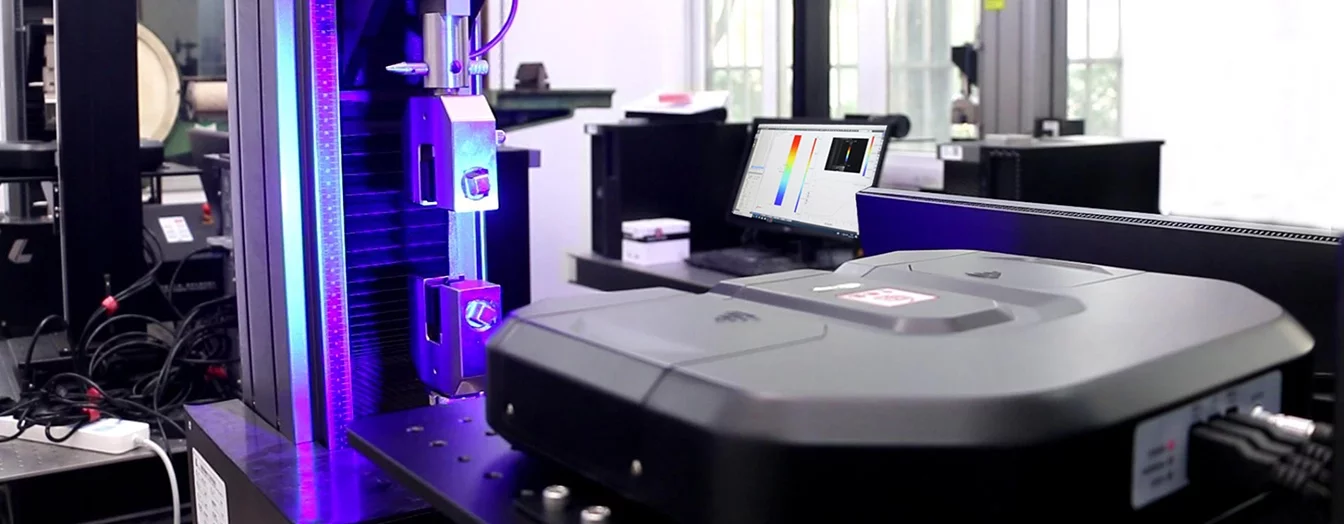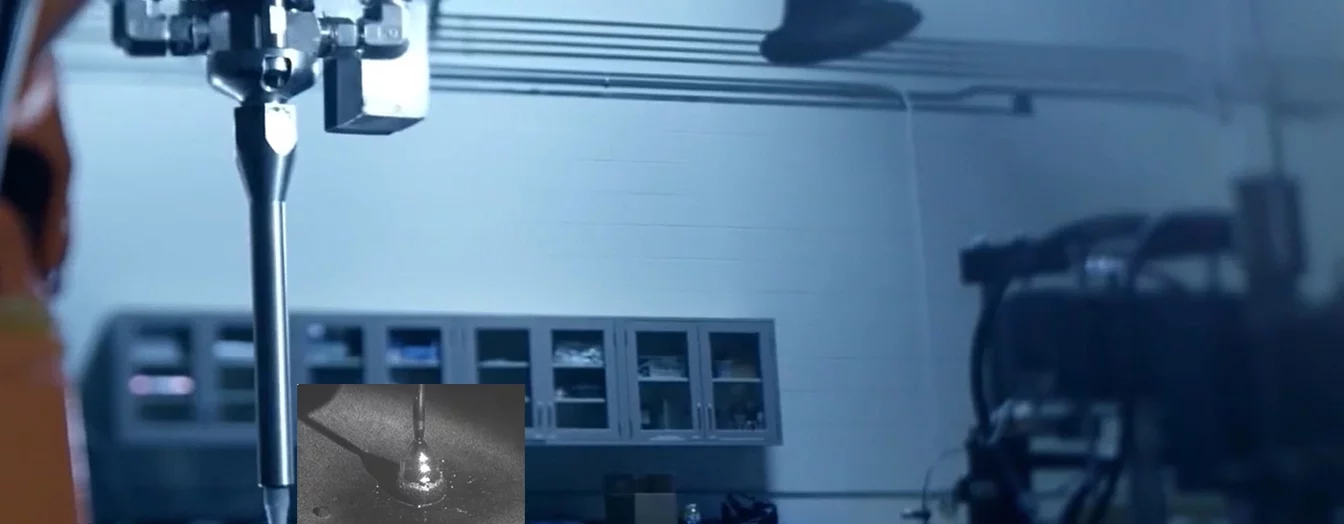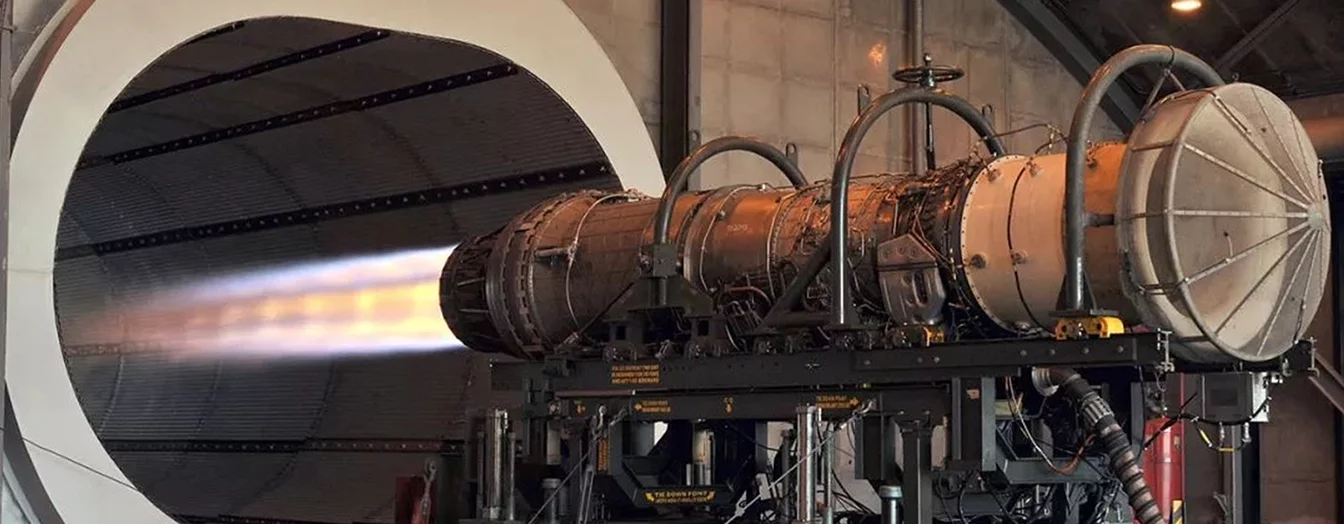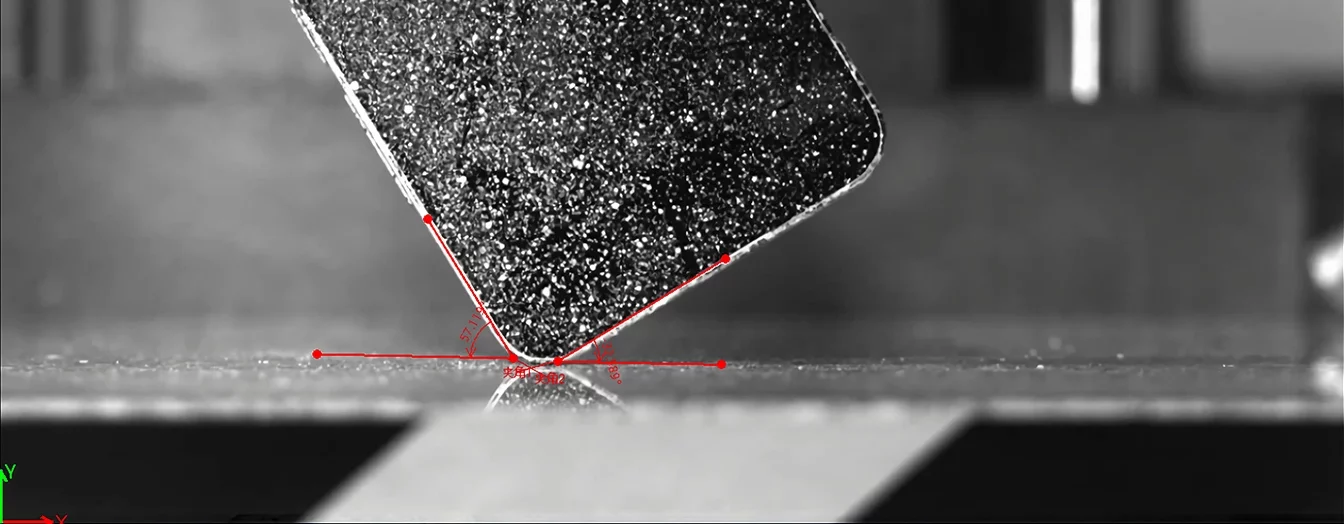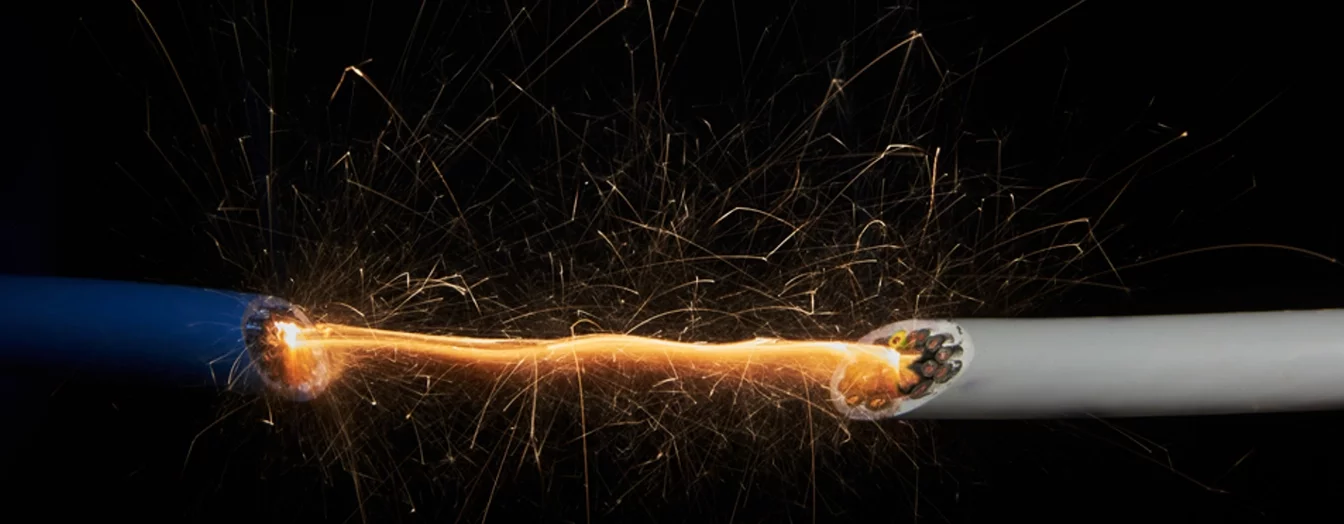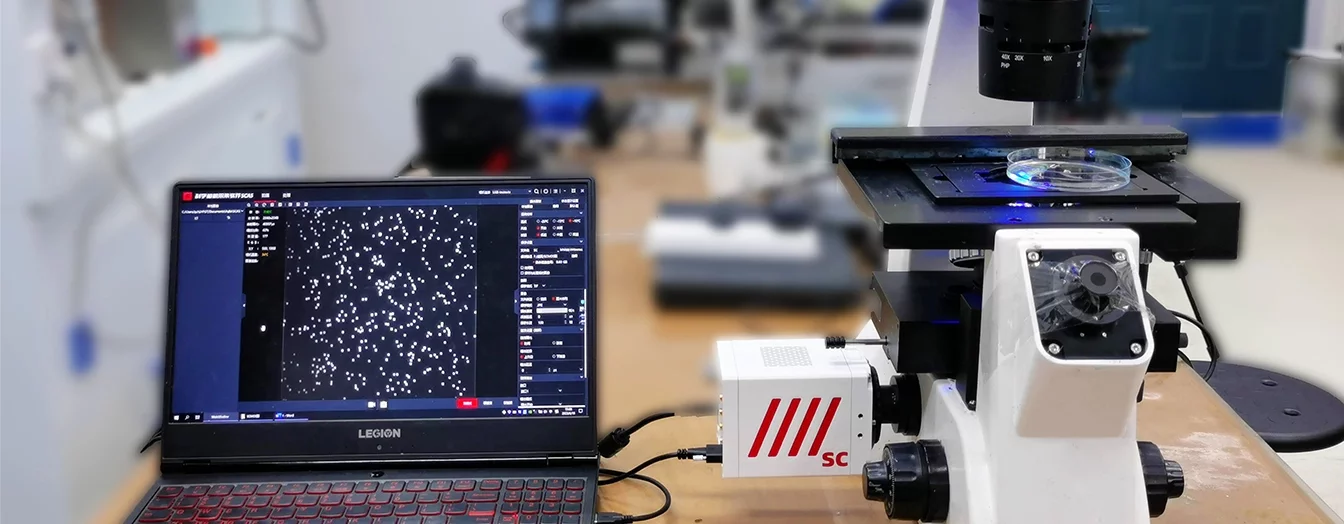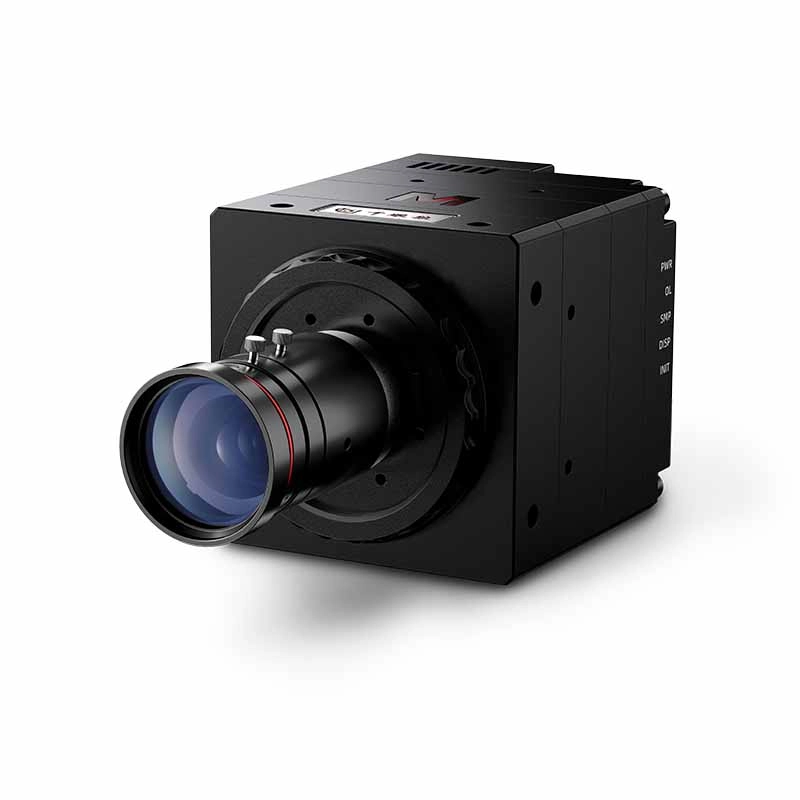1.Research on the Dynamics of Bubble Spreading Process
The spreading of bubbles on solid surfaces plays a significant role in natural and industrial applications, such as mineral flotation and self-cleaning surfaces. In the early stages of spreading, the contact line moves rapidly and at a small scale, presenting a substantial challenge for experimental research. A research team from China University of Mining and Technology employed the thousand-eye wolf high-speed camera technology to track the spreading process of bubbles on homogeneous solids (Teflon, acrylic, glass, stainless steel) and heterogeneous solids (lignite and anthracite), studying the dynamic behavior of bubble spreading and further observing the evolution patterns of the gas-liquid interface morphology. (For details, please refer to "Research on the Dynamic Behavior of Bubble Spreading Process Based on High-Speed Dynamics")
2.Experimental Method
To accurately observe the dynamic spreading process of a single bubble on a solid surface, the research team constructed a visualization experimental system, as shown in Image 1. This system consists of an observation tank, bubble generation, high-speed image acquisition, and a light source. The image acquisition part is composed of a Revealer high-speed camera connected to a computer.
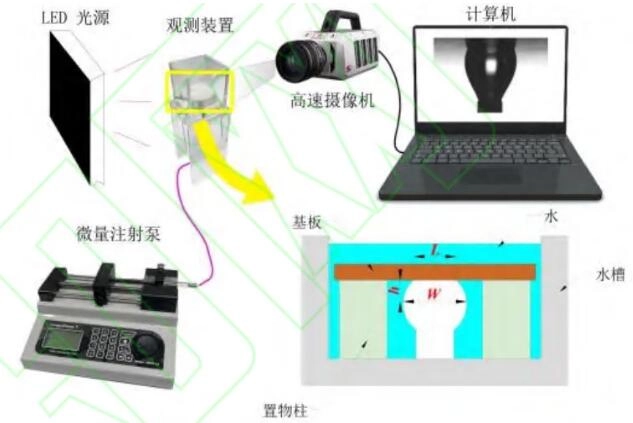
Image 1-- Experimental System Schematic Diagram
Adjust the microinjection pump to generate bubbles slowly at a rate of 1μL/min, and try to maintain the initial shape and size of the spreading bubble by controlling the distance between the needle tip and the solid surface. When the bubble is about to contact the solid surface, stop the gas injection. After the bubble contacts the solid surface, it spreads spontaneously. The entire process of bubble spreading is recorded with a high-speed camera at a capture speed of 9200fps, and each experiment is repeated three times. Use software to quantitatively process the images captured by the high-speed camera to obtain parameters such as the length L of the three-phase line of the bubble spreading on the solid surface, the maximum width W, and its corresponding position H.
3.Experimental Analysis
1/3. Bubble Adhesion and Spreading Process
After the gas injection stops, the bubble at the end of the stainless-steel needle in the water tank slowly contacts the solid substrate under inertia, followed by a spreading behavior. Figure 2 shows the contact and spreading process of bubbles on different solid surfaces, where the red and green lines represent the baseline of the solid surface and the connection line of the geometric center of the bubble, respectively. After the bubble approaches the solid surface, it first undergoes a liquid drainage process. When the liquid film between the bubble and the solid ruptures, the three-phase line expansion process begins immediately. The moment when the bubble starts to spread on the solid surface is selected as t=0ms. From Image 2, it can be seen that bubbles on Teflon, stainless steel, acrylic, and glass substrates spread to a larger area in a very short time, and then the spreading speed becomes slow until it stabilizes.

Image 2-- The dynamic spreading process of bubbles on different solid surfaces.
From Image 2(a-d), it can be observed that as the bubble spreads on the homogeneous solid surface, within t=0~15ms, the three-phase contact line expands rapidly, a stage known as the rapid spreading phase. Subsequently, the motion of the three-phase contact line becomes slow until maximum expansion, a stage referred to as the slow spreading phase. From Figure 2(e-f), it is evident that compared to the aforementioned four homogeneous samples, the coal sample surface exhibits shorter three-phase line spreading lengths and significantly longer spreading times than other samples. From the green dotted lines in Figure 2(a-f), it is clear that the geometric center position of the bubble on the homogeneous solid surface gradually moves upward with the expansion of the three-phase line, and the bubble shape evolves from an initially spherical approximation to an ellipsoidal shape with the upper end truncated. For heterogeneous materials such as lignite and anthracite, there is a slight fluctuation in the geometric center position of the bubble, but the overall shape of the bubble remains approximately spherical.
2/3. Bubble Spreading Dynamics
When the liquid film between a bubble and a solid surface thins and ruptures, a three-phase contact line begins to form. Due to the imbalance of interfacial tension, the three-phase contact line continuously expands outward, resulting in the phenomena of gas phase spreading and solid phase liquid displacement. The longer the three-phase contact line, the stronger the ability of the solid surface to displace liquid from the bubble. The evolution of the spreading length L of bubbles on different homogeneous solid surfaces over time is shown in Image 3.

Image 3-- The evolution of the three-phase line length (L) on a homogeneous solid surface over time (t), with an inset figure showing a double logarithmic plot.
From the above image, it can be seen that the motion process of the three-phase line includes two stages: ① The rapid spreading stage (t≤15ms), where the bubble spreading process on different solid surfaces exhibits a universal self-similar behavior, meaning that the three-phase contact line expands to a larger length in a very short time after the liquid film breaks, and this process is independent of the initial conditions of the solid surface; ② The slow spreading stage (t>15ms), where due to differences in physical and chemical properties such as the morphology, chemical composition, microstructure, and wettability of the solid surface, the bubble spreading process has its own characteristics. The final spreading length of the three-phase line is in the order of: Teflon > Stainless Steel > Plexiglass > Glass.

Image 4-- The evolution of the three-phase line length (L) on the surfaces of lignite and anthracite over time (t), with an inset figure showing a double logarithmic plot.
The evolution of the three-phase line spread length L on the surfaces of lignite and anthracite over time is shown in Image 4. The curve of the three-phase line length evolution on lignite surface shows significant differences compared to homogeneous solids, while the evolution pattern of the three-phase line length on anthracite surface is closer to that of homogeneous solids. The final three-phase line length of bubbles spreading steadily on the surfaces of lignite and anthracite is about 50% shorter than the average of homogeneous solids. After multiple repeated experiments, the motion of the three-phase line on lignite surface exhibits multiple fluctuation characteristics. This indicates that the time for bubbles to spread on the surfaces of lignite and anthracite is at least two orders of magnitude greater than that on the surface of homogeneous solids, and the bubbles on the lignite surface have greater volatility during the slow spread phase.

Image 5-- Different Solid Surface Apparent Contact Angles
As shown in Image 5, the apparent contact angles on solid surfaces are as follows: Teflon > Anthracite > Stainless Steel > Plexiglass > Glass > Lignite. The contact angles of liquid droplets on four homogeneous solid surfaces follow the same pattern as the three-phase line spreading length, and the contact angles of heterogeneous lignite and anthracite also correspond to their three-phase line spreading lengths. This indicates that wettability is an important factor affecting the bubble spreading process on solid surfaces.
The wettability of a solid surface is determined by its microscopic morphology and chemical composition. As shown in Image 6(a), on a smooth and homogeneous solid surface, the bubble first displaces the liquid film between the gas and solid, and after the rupture of the liquid film, the three-phase contact line gradually expands symmetrically outward until the spreading process ends.
Heterogeneous solid surfaces such as lignite and anthracite are rough and cracked, and when immersed in water, micro and nano-sized bubbles reside on the surface or within the pores, as shown in Image 6(b). As the liquid film between the bubble and the coal sample surface continuously thins, the bubble may merge with smaller bubbles in the surface or cracks, affecting the movement of the three-phase line. This could also be the reason for the slight increase in the area of bubbles on the lignite surface mentioned earlier. Moreover, the mixture of organic and inorganic substances on the coal sample surface leads to different hydrophilic/hydrophobic sites, and the uneven surface topography causes non-uniform roughness, resulting in pinning effects during the movement of the three-phase line, leading to asymmetrical movement. Therefore, it can be inferred that the combined effects of pinning on the coal sample surface and the merging of bubbles significantly differ from the movement patterns of the three-phase line on a homogeneous solid surface.
3/3. Deformation of the gas-liquid interface during spreading process
Image 7-- Evolution of the maximum width (W) of bubbles and corresponding positions (H) during the spreading process.
As the three-phase line expands, both the outline and geometric center of the bubble will change, primarily due to the interaction between the gas and liquid phases. The maximum width W of the bubble spreading on a homogeneous solid surface changes dynamically with time, as shown in Image 7(a). When the bubble begins to spread rapidly on the solid surface, the maximum width W suddenly decreases. An obvious concave area can be observed in Image 7(a) after the bubble starts to spread, corresponding to the rapid increase in the length of the three-phase line during spreading. After W reaches its lowest point, the rapid spreading process ends, followed by a slow spreading stage. During the slow spreading stage, the maximum width W gradually increases to a stable value. On glass and acrylic surfaces, W quickly reaches equilibrium and the final variation in W is small, whereas on Teflon and stainless-steel surfaces, it takes longer for W to reach equilibrium and the final variation in W is larger. The evolution of the maximum width W of the bubble indicates that the three-phase line moves with the redistribution of fluid within the bubble.
The evolution of the maximum width W of bubbles during the dynamic spreading process of lignite and anthracite is shown in Image 7(b). The maximum width W of bubbles on the coal sample surface during the dewetting process exhibits fluctuations, but generally shows an upward trend. This may be related to the chemical structure and micromorphology of the solid surface. The lower the coal rank, the greater the surface roughness, and when immersed in water, more micro-nanoscale bubbles in the surface grooves and gases adsorbed in the pores are present. When surface micro-nanoscale bubbles merge with spreading bubbles, this may increase the volume of the bubbles, thereby affecting their width. Thus, the non-uniformity of the physical or chemical structure of the coal surface causes instability in the widest part of the bubbles during the movement of the three-phase line.
During the expansion process of the three-phase line, the maximum width W reflects the lateral characteristics of the bubble. In order to explore the longitudinal characteristics of the bubble, the position H of the bubble is defined as the distance between the point of maximum width and the solid baseline. For homogeneous solids, the position H of the bubble decreases sharply with time before gradually decreasing to a stable value, which aligns with the change patterns of the three-phase line length L and the maximum width W of the bubble. On the surfaces of lignite and anthracite, the changes in bubble position H over time are less pronounced, generally showing a fluctuating slow decline with a small amplitude. As shown in Image 8, by extracting the bubble contour line using software, it can be intuitively observed that as the three-phase line expands, the position H of the bubble gradually moves upwards towards the solid surface, with the greatest upward movement on Teflon and stainless-steel surfaces, and the least on lignite and anthracite surfaces.
The interaction at the gas-liquid interface changes as the three-phase line spreads, closely related to the wetting properties of the solid surface. The stronger the hydrophobicity of the solid surface, the more stable the hydration film, the greater its expansion capability, the further the liquid film is displaced, hence the longer the spreading of the three-phase line and the greater the deformation of the gas-liquid interface. However, non-homogeneous solid surfaces have different hydrophilic and hydrophobic sites and significant local microstructural differences, leading to complex patterns in their three-phase line movement and gas-liquid interface evolution.
4. Experimental Conclusions
(1) During the bubble spreading process, the three-phase line mainly undergoes rapid and slow spreading phases. The rapid spreading phase exhibits self-similar behavior characteristics, while the slow phase is influenced by properties such as the solid surface morphology, chemical composition, microstructure, and wettability.
(2) The wettability of the solid surface is an important factor affecting bubble spreading behavior. The non-uniform wettability of coal sample surfaces is the fundamental reason for their bubble spreading behavior to differ significantly from that of homogeneous solids. The three-phase line spreading length on coal sample surfaces is about 50% shorter than that on homogeneous solids, and the spreading time is at least two orders of magnitude greater.
(3) For homogeneous solid surfaces, the rapid spreading phase of the three-phase line follows a power law model with an exponent b=1/2, dominated by surface tension and inertial forces; the slow spreading phase follows a power law model with an exponent b=1/10, dominated by surface tension and viscous forces. For coal sample surfaces, the rapid spreading phase of the three-phase line also conforms to the power law model with an exponent b=1/2.
(4) With the expansion of the three-phase line, the interaction between the gas and liquid phases causes changes in the gas-liquid interface, especially on homogeneous solid surfaces. The coal sample surface, due to the physical or chemical structural heterogeneity, produces gas integration and pinning effects, causing small-scale fluctuations in the gas-liquid interface.
5. Conclusion
This experiment utilized a high-speed camera to visualize the bubble spreading process, examining the impact of solid surface properties on bubble spreading behavior, investigating the motion mechanism of the three-phase line and the evolution rules of gas-liquid interface morphology. This lays a theoretical foundation for a deeper understanding of particle-bubble adhesion processes and the stability of particle-bubble floc interface structures.




